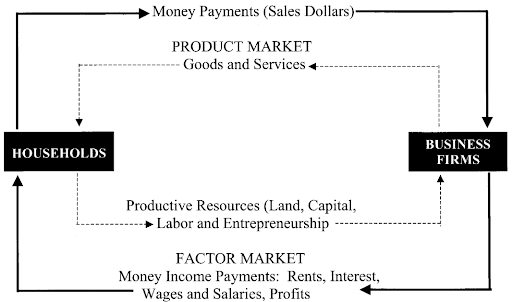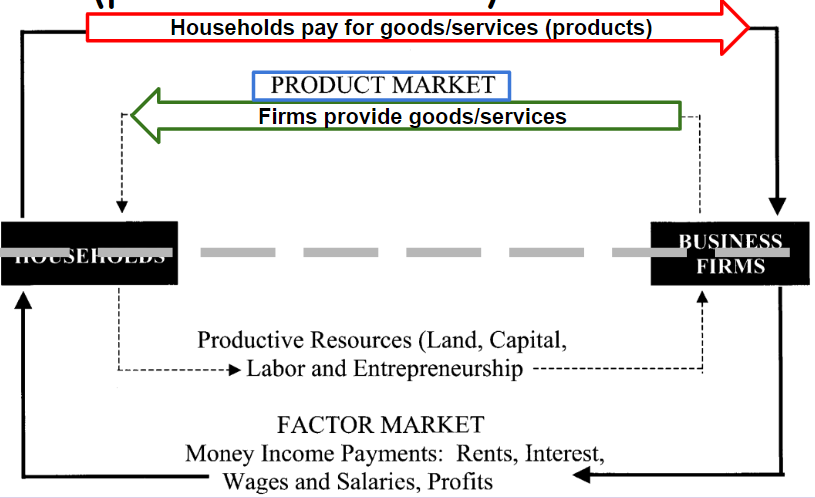Circular Flow Model
1/7
There's no tags or description
Looks like no tags are added yet.
Name | Mastery | Learn | Test | Matching | Spaced |
|---|
No study sessions yet.
8 Terms
Factors of production
Resources used to produce goods and services. Land, labor, and capital (and entrepreneurs(hip), but we won’t over that).
Key economic questions
What should we make? How should we make it? Who gets it? Societies have to answer these three questions due to scarcity and create economic systems to answer them.
Traditional economy
Economic decisions are based on custom and historical precedent.
Command economy (AKA centralized economies)
Government planning groups make the basic economic decisions.
Market economy
Economic decisions are guided by changes in price that occur as buyers and sellers interact in the marketplace.

Circular flow model
Basic model demonstrating the overall economy.
Households own the factors of production and consumer goods/services.
Firms produce goods/services by taking inputs (FoPs) and turning them into outputs (goods/services)

Product market (circular flow)
Households pay for goods/services (monetary exchange), firms provide goods/services (physical exchange).

Factor market (circular flow)
Households supply workers, resources, and investors (physical exchange), firms pay wages, rent, and profits (monetary exchange).